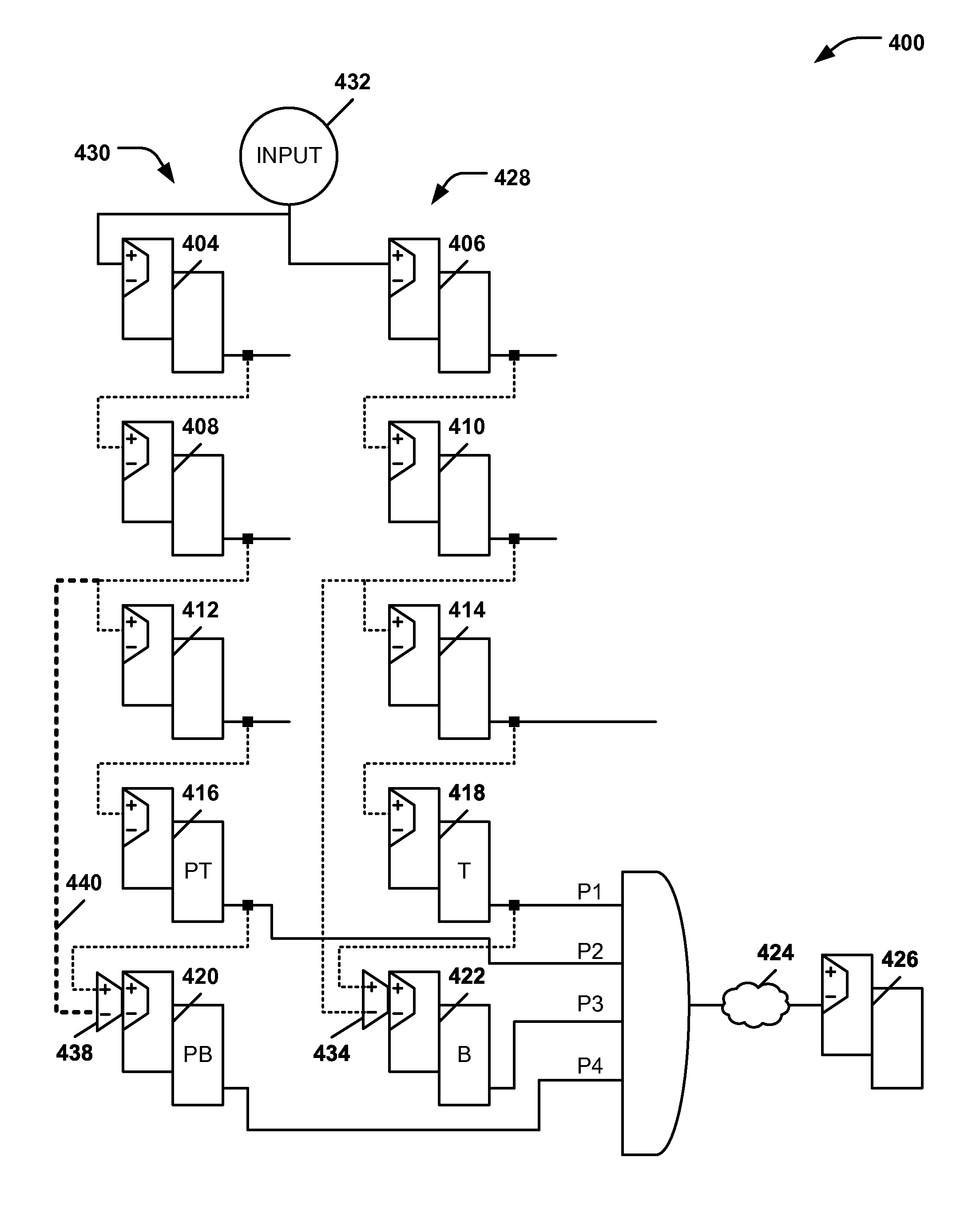Inserting bypass structures at tap points to reduce latch dependency during scan testing
a bypass structure and latch technology, applied in the direction of electronic circuit testing, measurement devices, instruments, etc., can solve the problems of timing related errors in the test path, and achieve the effects of reducing fail data, improving diagnostic time, and improving production
- Summary
- Abstract
- Description
- Claims
- Application Information
AI Technical Summary
Benefits of technology
Problems solved by technology
Method used
Image
Examples
Embodiment Construction
[0015]An embodiment of a system may automatically identify problem areas of a circuit and determine how and where to modify a scan path to remove dependencies. An embodiment of a system may logically analyze scan paths to identify circuit configurations where a dependency may cause a functional status of a component to be indeterminable (e.g., because it cannot be tested). The system may increase an amount of a combination logic path that may be tested and may facilitate transition fault testing improvements.
[0016]An embodiment of a system may insert a multiplexer into a scan chain at a tap point to enable circuit testing of components exhibiting latch dependency. A valid tap point may comprise a scan position that does not contribute to a same cone of logic. A cone of logic may include combination logic in a circuit that resolves to a single point.
[0017]Problematic configurations may include scan latch adjacency and parallel latches fed by a common scan input. Scan latch adjacency ...
PUM
 Login to View More
Login to View More Abstract
Description
Claims
Application Information
 Login to View More
Login to View More - R&D
- Intellectual Property
- Life Sciences
- Materials
- Tech Scout
- Unparalleled Data Quality
- Higher Quality Content
- 60% Fewer Hallucinations
Browse by: Latest US Patents, China's latest patents, Technical Efficacy Thesaurus, Application Domain, Technology Topic, Popular Technical Reports.
© 2025 PatSnap. All rights reserved.Legal|Privacy policy|Modern Slavery Act Transparency Statement|Sitemap|About US| Contact US: help@patsnap.com



